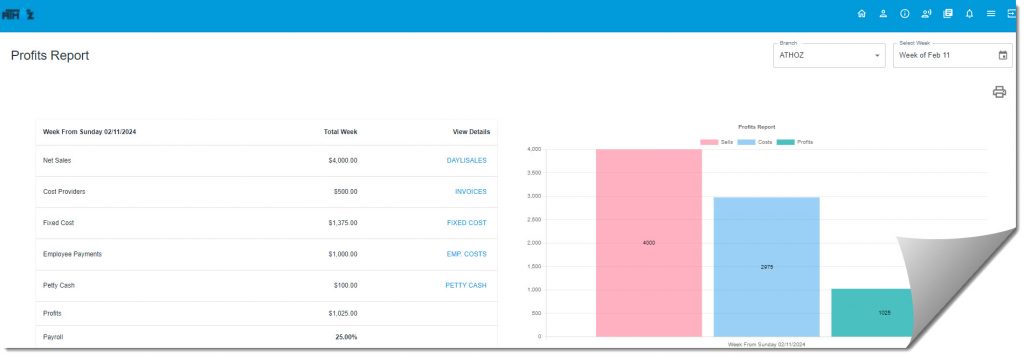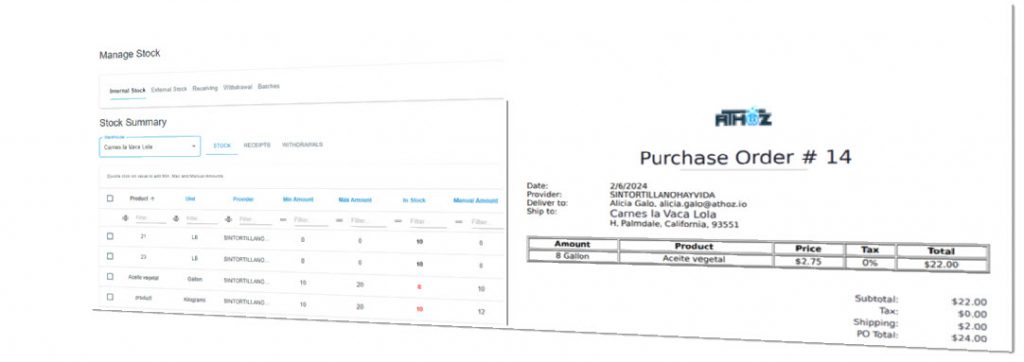Often, business owners, whether small, medium or even large – especially those who have invested a considerable amount in opening their restaurants – are faced with a dilemma. By comparing their competitors’ prices, they adjust theirs accordingly, hoping to keep their business afloat.
However, are you really sure that these prices cover the costs of your business? This competition-based pricing strategy is akin to navigating uncharted waters without a compass, becoming a risky game. Some choose to establish prices on a trial basis, without a detailed cost analysis, while others allow themselves to be influenced by the environment, adjusting prices according to trends in other cities. What is the result of this? There is a risk of alienating clientele with no possibility of return or, in the case of having multiple locations, of having successful establishments due to economic factors and luck, while others, regardless of the investment made, fail to attract buyers. In the business field, it is crucial to avoid speculation and price control becomes essential.

By completely ignoring their own costs, they are putting the future of their company at risk, comparable to building a house without a solid foundation, which sooner or later will result in obvious cracks.
The viability of a restaurant does not only lie in attracting customers. If prices do not reflect true costs, the business is likely generating less profit than thought or, worse, incurring losses.
It’s time to change the perspective. It is imperative to carefully analyze the costs, understand the value of the services offered and, based on this, establish prices that guarantee the financial stability of the business. This approach represents the path to a prosperous and sustainable future.
First of all, it is essential to have a precise and well-organized recipe for each dish, with the appropriate measurements. This recipe is essential to address the costing process. In future posts, we will delve into recipe making.
Information gathering is the next crucial step: gathering all the relevant data needed for dish costing. This involves collecting the purchase prices of all the ingredients used in each dish, the labor costs associated with its preparation, and any other indirect expenses linked to food production. We will present a simple theory to estimate these costs.
Although employees’ salaries are paid regardless of whether sales occur or not, it is imperative to consider them in the cost of production. For example, if you make birthday cards and you don’t include your labor cost in the calculation, how would this affect your birthday cards sold? You are giving away your time, right, and what is time? Money.

Next, it is essential to identify all the ingredients used in the preparation of each dish on the menu, making sure to detail the exact quantities of each one.
Subsequently, the costs of the ingredients are determined, calculating the cost of each ingredient by multiplying its unit price by the quantity used in each dish. For example, if a tomato sauce recipe calls for a can of tomatoes at $2.50 each, the cost of tomatoes for that recipe would be $2.50.
Finally, labor costs are calculated by estimating the time required to prepare each dish and multiplying this time by the cost per hour of labor in the restaurant. For example, if a dish requires 15 minutes of work and the cost per hour of labor is $15, the labor cost for that dish would be $3.75.
Consideration of indirect expenses: In addition to ingredients and direct labor, it is important to consider indirect expenses, such as premises rent, utilities, kitchen supplies, insurance, taxes, etc. Divide these costs by the total number of dishes served in a given period to obtain an indirect cost per dish.
This is where it is key to have intelligent systems internally in the business that allow you to have details.
Calculating the total cost per dish: Add the costs of ingredients, direct labor, and overhead for each dish. This will be the total production cost of that dish.
Establishing the selling price: Once you have the total cost per dish, determine the profit margin you want to obtain and add this margin to the total cost to establish the selling price. For example, if the total production cost of a dish is $10 and you want to make a 30% profit margin, the selling price would be $13.
Periodic review and adjustment: It is important to review and adjust dish costs regularly to ensure they are aligned with market prices, changes in ingredient costs, and other economic factors.
When striving for a highly organized and automated restaurant operation, leveraging technological tools such as smart inventory systems can be immensely beneficial. These advanced inventories streamline ordering processes based on predefined minimum and maximum thresholds, cater to fluctuating sales periods, forecast consumption patterns, and facilitate intelligent purchasing through automated order generation. By projecting anticipated costs upfront and providing real-time updates on product prices upon delivery, these systems empower restaurateurs to adjust dish costs with greater precision. This automation eliminates manual labor, paving the way for a more efficient back-office technology integration within restaurants.
If you think this is impossible, it is because you have not worked with the Athoz inventory made specifically for gastronomic businesses. Contact us for a sample to help you take your restaurant to the next level.

The text above serves as a starting point, but for more detailed information, you are welcome to contact us. We know your business in depth and we understand the sacrifices involved in running a restaurant, a company that requires organized and coordinated management in various areas simultaneously.
Imagine a friend who buys coffee frequently, has subscriptions he doesn’t use, or pays for a gym he rarely goes to, justifying these expenses as something he can afford but is worried about making it to the weekend. However, upon careful analysis, he would see that he can actually afford these expenses with peace of mind, or he would realise that by making significant adjustments and changes, his finances would improve considerably, offering him greater opportunities for peace of mind or financial growth.
It is essential to identify where to cut back so that he is not constantly relying on day-to-day income. The key is to visualise the situation with total clarity.
We conclude each post with heartfelt appreciation for the dynamic realm of gastronomy. We hold great admiration for the individuals who breathe life into each culinary creation, crafting unforgettable experiences. At ATHOZ – Back-Office Technology for Restaurants, our commitment to your success is unwavering, driven by our profound understanding, respect, and love for the fervor inherent in every restaurant venture. Together, let us weave gastronomic wonders! With warm regards, Team ATHOZ
www.athoz.net / @athoz.io / sales@athoz.net



